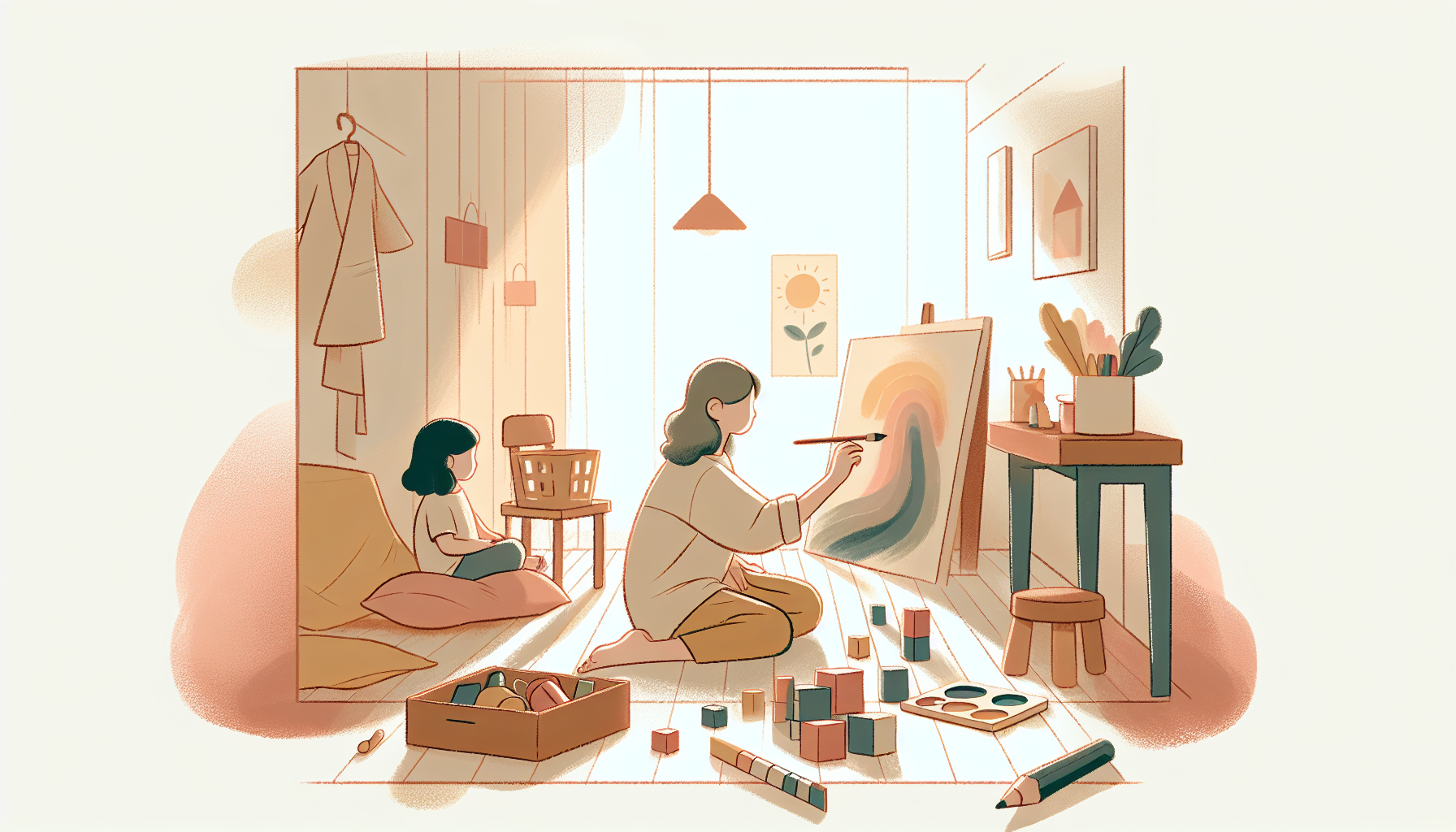“`html
Encouraging Creativity in Children: A Guide for Parents
Introduction
Creativity is a cornerstone of child development. It fuels imagination, problem-solving, and emotional expression, all of which are essential for helping children navigate their world. For parents, nurturing creativity in children is not just about fostering artistic talents but also about enabling them to think critically and adapt to new challenges.
In this article, we’ll explore why creativity is vital for children, discuss practical parenting strategies to support their creative growth, and share actionable tips to implement at home. By encouraging creativity, parents can help their children develop a sense of autonomy, confidence, and self-expression.
Why Creativity Matters in Child Development
Creativity plays a crucial role in shaping young minds. It goes beyond traditional arts and crafts, encompassing critical thinking, innovation, and emotional well-being. Studies show that fostering creativity in children supports cognitive development, enhances problem-solving skills, and promotes resilience.
According to principles of cognitive-behavioral therapy (CBT), creativity also satisfies several psychological needs, including:
- Autonomy: Creativity allows children to make choices and express their individuality.
- Self-expression: It provides a safe outlet for emotions and thoughts that might otherwise be hard to articulate.
- Competence: Engaging in creative activities builds confidence in their abilities.
- Connection: Creative projects often encourage collaboration and strengthen relationships with peers and family members.
By understanding the role of creativity in child development, parents can better support their children’s growth and emotional needs.
Parenting Strategies to Foster Creativity
1. Create a Safe and Stimulating Environment
Children thrive in environments where they feel safe to explore and experiment. Make your home a judgment-free zone where mistakes are seen as opportunities to learn. Provide access to tools like art supplies, building blocks, and open-ended toys that encourage imaginative play.
Additionally, consider designating a corner of your home as a “creativity space” where your child can freely engage in creative activities. Studies show that a consistent, stimulating environment fosters creativity and cognitive flexibility.
2. Encourage Open-Ended Play
Open-ended play, where there are no strict rules or fixed outcomes, is a fantastic way to nurture creativity. Activities like building with LEGO, playing dress-up, or drawing encourage children to think outside the box and use their imagination.
For more ideas on fostering play, check out our article on why play is essential for child development. Open-ended play also helps children develop decision-making skills and emotional regulation.
3. Ask Open-Ended Questions
When talking to your child, encourage creative thinking by asking questions like:
- “What do you think would happen if…?”
- “How would you solve this problem?”
- “Can you come up with a new way to use this object?”
Open-ended questions stimulate critical thinking and help children develop their own ideas instead of looking for “correct” answers.
4. Limit Screen Time
While technology can be a valuable tool for learning, excessive screen time can hinder creativity. Encourage your child to spend more time engaging in offline activities like reading, drawing, or playing outdoors. Balance is key: consider setting specific times for screen use and prioritizing educational or creative content.
5. Model Creativity
Children often emulate their parents’ behaviors. Show them the importance of creativity by engaging in creative activities yourself. Whether it’s cooking, painting, or brainstorming new ideas, your enthusiasm will inspire them to explore their own creative interests.
6. Praise Effort, Not Just Results
Focus on the process rather than the outcome. Praise your child’s effort and dedication, even if their project doesn’t turn out as expected. This helps build resilience and teaches them that creativity is about exploration and growth, not perfection.
Practical Tips for Encouraging Creativity
Here are some actionable tips that you can try at home to nurture your child’s creativity:
- Introduce your child to different forms of art, such as painting, music, or dance.
- Plan family activities that encourage teamwork, like building a fort or creating a family scrapbook.
- Read stories together and encourage your child to imagine alternative endings.
- Provide opportunities for outdoor adventures, where they can explore nature and use their senses.
- Encourage journaling or storytelling to help them express their thoughts and emotions creatively.
Remember, the goal isn’t to create a masterpiece but to enjoy the process and inspire your child to think creatively.
Conclusion
Encouraging creativity in children is one of the most rewarding aspects of parenting. By fostering a safe, stimulating environment and offering opportunities for open-ended play and self-expression, parents can help their children develop critical skills, resilience, and a sense of autonomy.
Remember, creativity is not just about artistic talent. It’s about problem-solving, emotional growth, and building meaningful connections. By implementing the strategies and tips discussed in this article, you can empower your child to navigate the world with confidence and imagination.
For more resources on child development and parenting strategies, explore our collection of articles. Together, let’s nurture the next generation of thinkers, creators, and innovators.
“`

